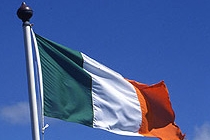The Remarkable Irish Monastery of Sceilg Mhichíl
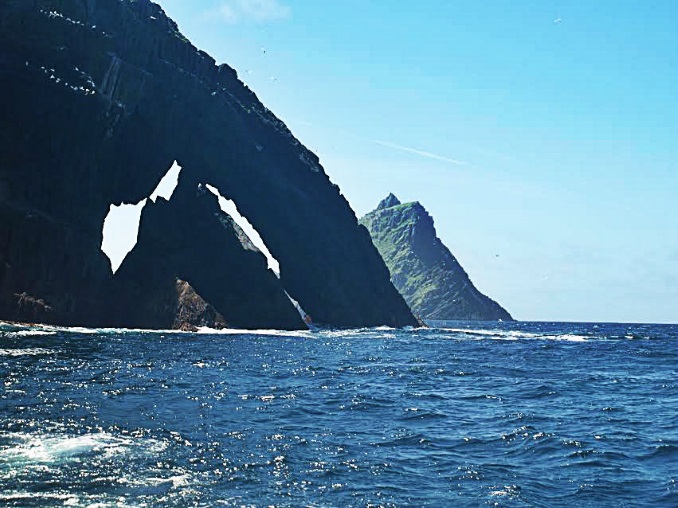
Ireland's Skellig Islands (Irish: Na Scealaga), are two small spectacular pinnacles rising out of the Atlantic Ocean just over 12 km (7 miles) southwest of Valentia Island, County Kerry (Irish: Dairbhre, Contae Chiarraí). The largest of the islands is Skellig Michael (Irish: Sceilg Mhichíl). The smaller is Little Skellig (Irish: Sceilg Bheag). The islands each have their own beauty and significance. Sceilg Bheag for its significant and important bird population. Skellig Michael, also an important site for seabirds, for its early Christian monastery that is a UNESCO World Heritage Site.
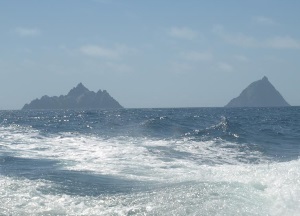
Given that the Skellig Islands are such significant features, rising as they do so dramatically out of the Atlantic Ocean close to the Irish coast. It is difficult to imagine that they did not play a part in the mythology of pre-Christian Ireland. Although there is no record of the islands being inhabited prior to the construction of the monastery, folklore has it that Ir, son of Míl Espáine, was buried on the island. In Irish ancient legend, Míl Espáine is the ancestor of early inhabitants of Ireland, the Milesians. In the collection of writings in the Lebor Gabála Érenn, the earliest version of which was compiled in the 11th century, the Milesians agree to divide Ireland with the Tuatha Dé Danann, a supernatural race in Irish mythology. They take the world above, while the Tuatha Dé take the world below known as the 'Otherworld'. There is also a text dating from the 8th or 9th century which states that Duagh, King of West Munster, escaped to "Scellecc" after a feud with the Kings of Cashel.
However, it is the well-preserved monastery dating to between the sixth and eighth centuries on Skellig Michael that is known throughout the world of archaeology. It is made up of six 'beehive' huts, two oratories, small terraces and a number of grave slabs and early sculptured crosses. Standing at some 200 metres (700 feet) above sea level the site is reached by a climb of over six hundred stone steps. Each step carved by hand from the solid rock. The determination to create a place to practice their religion in the solitude of this isolated extraordinary location above the open, often hostile waters of the Atlantic Ocean is remarkable. This is an awe-inspiring place, which Irish playwright and winner of the 1925 Nobel Prize in Literature, George Bernard Shaw (26 July 1856 – 2 November 1950) recognised, when he described it, after a visit in 1910, as an ‘incredible, impossible, mad place’ and as ‘part of our dream world’.
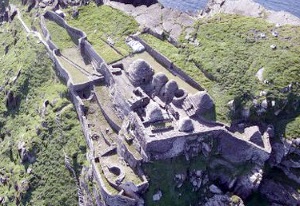
It is said that the monastery may have been founded as early as the sixth century by Saint Fionán (470–549). Also known as Saint Finnian of Clonard he was one of the early Irish monastic saints. In about 520 he founded Clonard Abbey (Irish, Cluain Eraird), which is situated by the River Boyne (Irish: An Bhóinn or Abhainn na Bóinne) in the province of Leinster (Laighin) in the east of Ireland. Although Skellig Michael is associated with Saint Fionán in the 6th century, reference has also been made to Suibhini of Skelig who is mentioned in the Martyrology of Tallaght at the end of the 8th century. There is also reference made to Viking raids on the monastery in 812 and 823 in the Annals of Innisfallen and Annals of Ulster. The Annals of Inisfallen, thought to have been compiled in 1092 and added to later, are a chronicle of the medieval history of Ireland between AD 433 and AD 1450. The Annals of Ulster (Irish: Annála Uladh) are annals of medieval Ireland covering the years from AD 431 to AD 1540, compiled in the late 15th century and added to later.
It is not clear when the the monastery was dedicated to Saint Michael, although in the mid 10th century a new church built at the monastery was named Saint Michael's Church. The monastery is thought to have remained continuously occupied until the 12th or 13th century. By this time the community is reported to have moved to Ballinskelligs (Baile an Sceilg) on the Iveragh peninsula (Uíbh Ráthach) in County Kerry (Contae Chiarraí). However, the monastery continued to be a place of pilgrimage for many years afterwards.
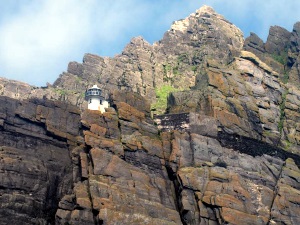
The remains of the monastery were taken into the care of the Office of Public Works in 1880 and the repair of collapsed structures began. The process of conservation has continued since that time. In 1989 the State purchased the island from the Commissioners of Irish Lights (Irish: Coimisinéirí Soilse na hÉireann) which is the General Lighthouse Authority for Ireland and its adjacent seas and islands. In 1996 Skellig Michael was inscribed on the UNESCO World Heritage List.
There are a number of boat tour operators to the Skelligs offering both a landing tour and tours around both environmentally important islands. When visiting Skellig Michael it always has to be borne in mind that there are over 600 steps before you reach the top. The Atlantic waters can be choppy if you are prone to sea sickness. Sometimes the weather makes the journey impossible so it is always important to check with your chosen tour operator. Having said this, it is a magical place to visit. It is difficult to be other than awestruck by this unique and remarkable early religious settlement and the physical achievement of those early monks who worked to create it.
- Irish
- English
- Log in to post comments

